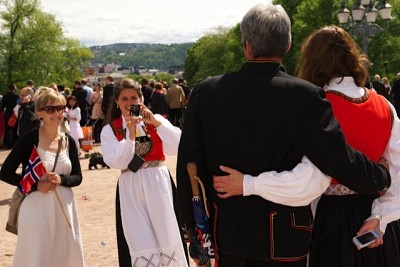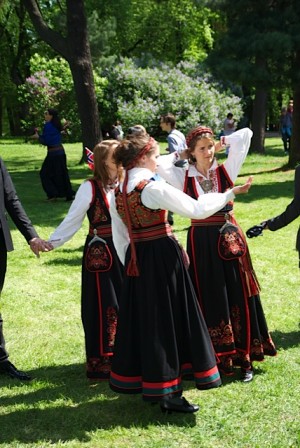The majority of traditional Norwegian folk costumes known as bunader are now being sewn and assembled far from their Norwegian roots. The bunad business is booming, and customers are able to save as much as NOK 10,000 (USD 1,800) if they’re made outside of high-cost Norway.

“It’s difficult to say exactly how much the foreign production represents, but I think around 60 to 70 percent of bunader are now being sewn abroad,” Inger Siri Strand, who runs bunad producer Solhjell of Molde, told newspaper Aftenposten this week.
Solhjell has been concentrating strictly on the bunad portion of its clothing business in recent years and only the sale and distribution of the elaborately embroidered costumes remains in Norway. Solhjell moved all of its bunad production to Estonia in 2007.
“There’s great interest for embroidery in Estonia and the country has its own traditions of folk costumes,” Strand said. Those were among the reasons production moved from Norway to Estonia, where Solhjell now has 26 employees in the capital of Tallinn who sew and embroider the Norwegian bunader that represent various districts all around Norway, such as Telemark and Hardanger.

Lower costs, however, are the biggest reason why so much of Norway’s bunad production has moved abroad. With some of the most elaborate bunader, for example the popular West Telemark version, costing as much as NOK 80,000 (USD 14,000), the savings can be substantial. And as long as the quality is high, increasing numbers of Norwegians don’t seem to care that the garment they’ll likely use as formal wear for the rest of their lives isn’t actually made in Norway.
Another company called Norske Bunadtradisjoner produces all of its bunader in China. It will deliver around 500 bunader to customers this year, while other firms use skilled seamstresses in Thailand.
There are around 450 different bunader, with the most popular ones rooted in Telemark, Hardanger and Nordland. Springtime is high season for bunader, which are worn to weddings, confirmations and, not least, on the 17th of May, Norway’s Constitution Day holiday. Bunader are also often used around Christmastime, and in other formal affairs.
Purists still wrinkle their noses over foreign-produced bunader, believing they’re not quite “the real thing.” The Husfliden chain with its 29 stores that specialize in traditional handicrafts in Norway remains the market leader in the bunad business, according to Aftenposten, but it’s feeling the competition. In addition to the bunad itself, come all the expensive accessories including special jewelry, belts and shoes that go with the various bunader, and that also are sold through Husfliden and a variety of other stores.
“It’s not that all bunader produced abroad are bad and all those that are made in Norway are good,” said Kathrine Bringsdal of handicrafts organization Norges Husflidlag. “But it’s not the same when the bunad, our national costume, is embroidered and sewn and China.”
Both Strand and other players with foreign production think it will increase, though. Others worry that can lead to a loss of bunad sewing expertise in Norway.
“Traditions are fragile,” warned Aftenposten in an editorial on the issue. “There are traditions we can’t afford to lose. If foreign production continues to grow over the next decades, we can risk that we no longer will find Norwegians who can master this once-so-proud local tradition.”
Views and News from Norway/Nina Berglund
Please support our stories by clicking on the “Donate” button now:

